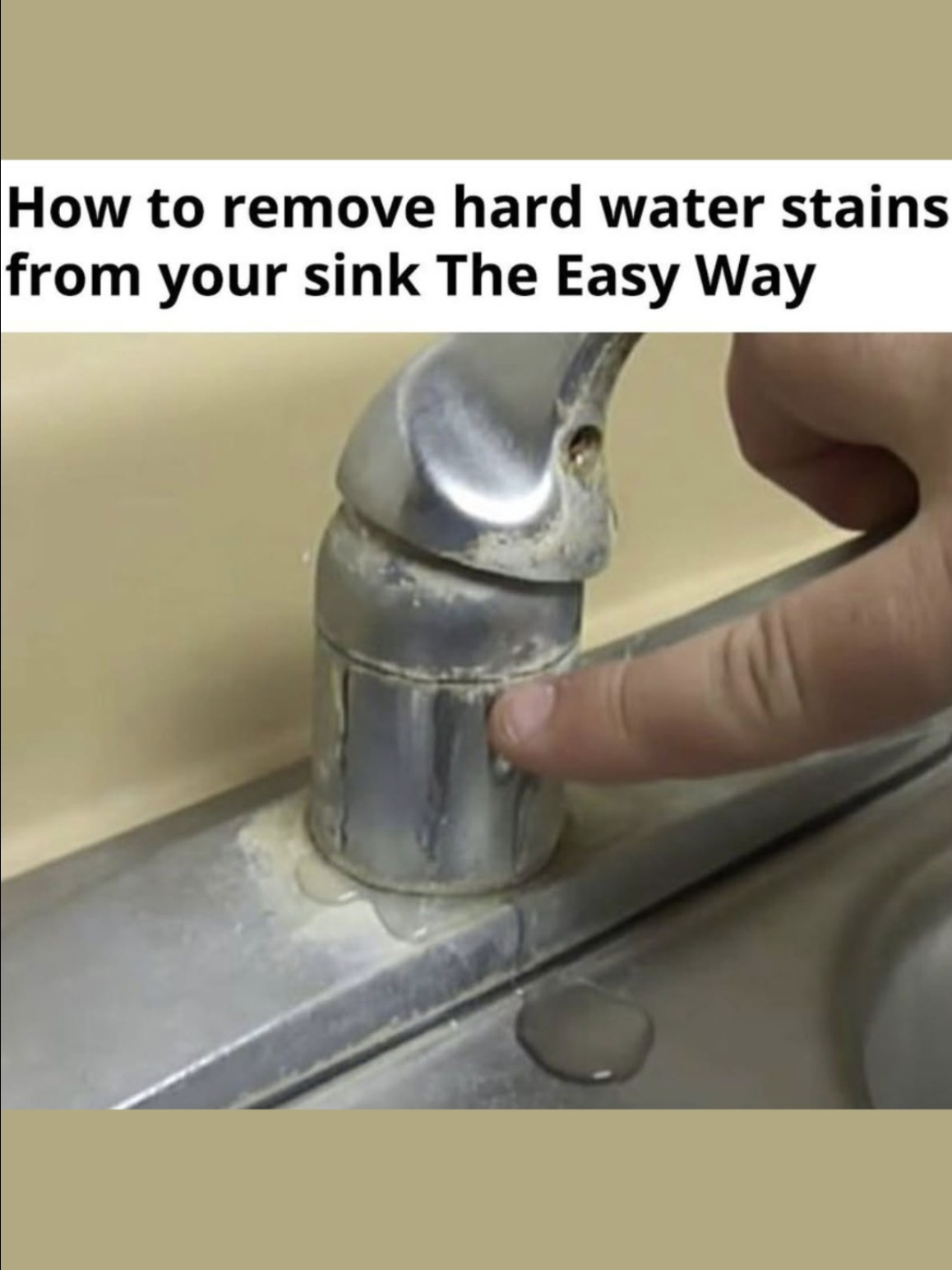Step 3: Rinse & Shine
Rinse the area with clean water
Dry with a soft microfiber cloth — this prevents new water spots
Admire your like-new shine
✨ Bonus: Your faucet will sparkle like it just came out of the showroom.
🔄 For Extra-Tough Stains: Try the Baking Soda Paste
If vinegar alone isn’t enough:
Make a paste: 2 parts baking soda + 1 part vinegar
Apply to the stain
Let sit 10–15 minutes
Scrub with the sponge
Rinse and dry
✅ This fizzy combo boosts cleaning power — great for shower doors or porcelain sinks.
🚿 Where Else This Works
This method isn’t just for sinks and faucets.
It works on:
Shower doors and tiles
Bathtubs
Toilet rims
Appliance finishes (like stainless steel fridges)
Glass surfaces
✅ Tip: For showerheads, remove and soak in a vinegar-filled plastic bag for 1 hour — then rinse.
🛡️ How to Prevent Hard Water Stains
Wipe down fixtures after use
Prevents water from drying and leaving marks
Use a squeegee in the shower
Reduces buildup on glass
Install a water softener
Long-term solution for hard water
Clean weekly
Stops stains before they set in
✅ Even a quick dry with a towel can make a big difference.
💬 Final Thoughts: Sometimes the Best Cleaner Isn’t in the Aisle — It’s in Your Pantry
We buy specialty sprays.
We use abrasive pads.
We spend money on “miracle” cleaners.
But the truth is:
The most powerful cleaning tool is already in your kitchen.
That bottle of distilled white vinegar?
It’s not just for salads.
It’s a limescale-destroying powerhouse.
So next time you see those white, crusty stains…
Don’t reach for the chemical spray.
Reach for the vinegar.
Because sometimes, the difference between “dull and dingy” and “spotless and shiny”…
Isn’t in the scrubbing.
It’s in the soak.
And once you try this?
You’ll wonder why you ever paid for expensive cleaners.
